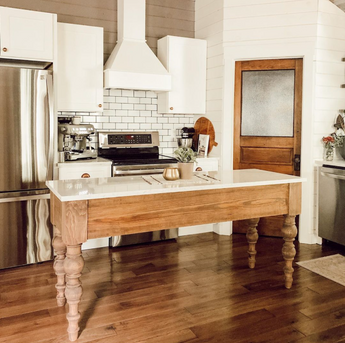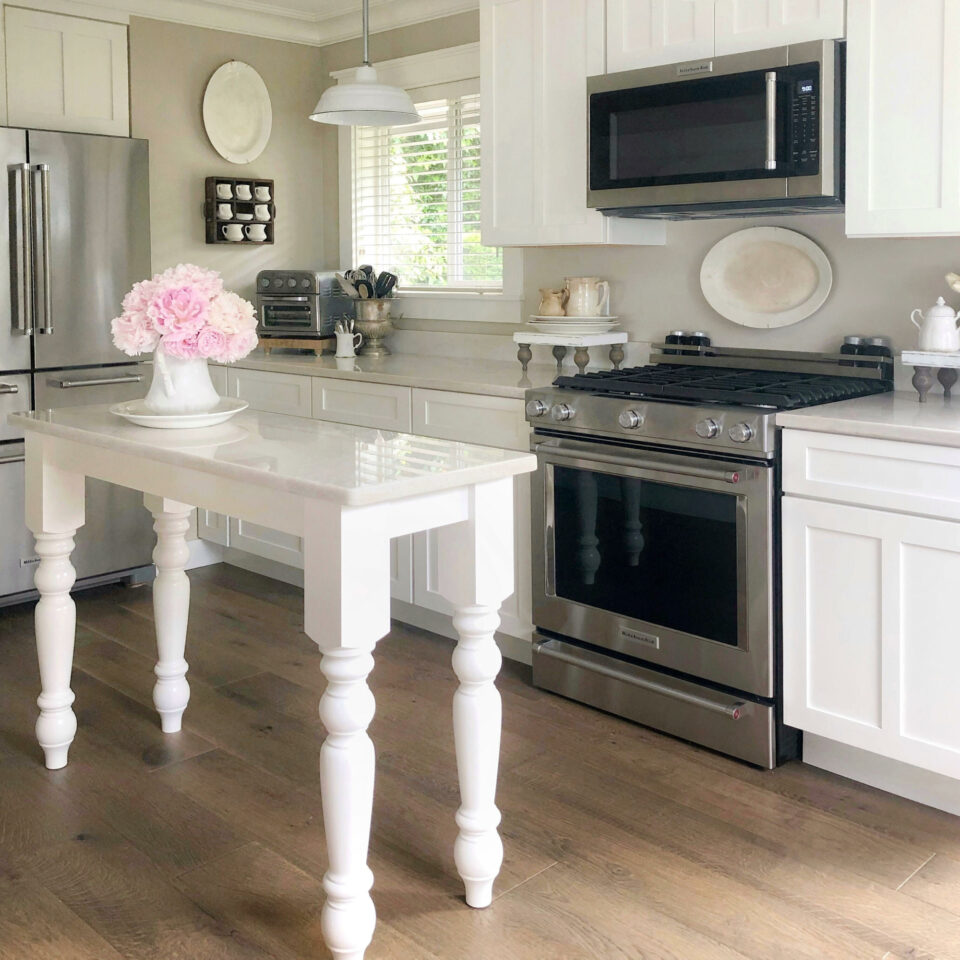Change Your Area with Cutting-edge Kitchen Island Leg Layouts
Change Your Area with Cutting-edge Kitchen Island Leg Layouts
Blog Article
The Value of a Sturdy Kitchen Area Island Leg in Producing a Functional Cooking Location
A durable kitchen island leg offers as a basic element in establishing a functional cooking setting, giving essential assistance for both the kitchen counter and various kitchen activities. As kitchen areas evolve right into multifunctional areas for cooking, eating, and interacting socially, the choice of materials and layout factors to consider for island legs ends up being increasingly essential.
Advantages of Sturdy Island Legs
Giving important support, sturdy kitchen island legs play a pivotal role in improving the capability and resilience of cooking area islands - kitchen island leg. These legs not just birth the weight of the kitchen counter and any kind of added items put on the island, yet also contribute to the total stability of the framework. A well-supported kitchen island makes sure that it remains functional and upright, also under heavy usage, which is particularly vital in active kitchen area environments
In addition, strong island legs can enhance the aesthetic allure of the kitchen area. They give a strong framework that can enhance different style styles, from contemporary to standard. This convenience allows property owners to customize their cooking area islands according to individual preference while making certain that the architectural honesty remains uncompromised.
Along with their helpful function, robust kitchen area island legs can additionally boost security. A steady island minimizes the danger of crashes brought on by tipping or wobbling, which is particularly important in houses with youngsters or elderly individuals. Additionally, solid legs can facilitate a seamless circulation of tasks, allowing for reliable meal preparation and social interactions within the kitchen area space. Inevitably, spending in durable kitchen island legs is crucial for a functional and visually pleasing cooking area.
Materials for Cooking Area Island Legs
When selecting materials for kitchen island legs, sturdiness and aesthetic appeal are vital aspects to think about,. One of the most usual products consist of hardwood, metal, and crafted timber, each offering unique benefits.
Hardwood, such as oak, cherry, or maple, is a traditional selection as a result of its toughness and classic elegance (kitchen island leg). It can withstand significant weight and is immune to use, making it suitable for high-use cooking area environments. Furthermore, hardwood can be tarnished or repainted to enhance different kitchen area styles
Steel legs, commonly crafted from stainless-steel or wrought iron, give a contemporary and commercial appearance. They are exceptionally strong and can support significant tons while being resistant to dampness and warm, which is advantageous in a cooking location. Steel legs can likewise be easily cleaned, boosting their usefulness.

Design Considerations for Security
The choice of materials for kitchen island legs directly influences the design considerations for security. When designing a kitchen island, it is extremely important to review the weight-bearing capacity of the chosen materials. Much heavier materials, such as strong wood or steel, normally supply higher stability, specifically under the stress and anxiety of day-to-day usage.
Furthermore, the leg design must include correct geometry to enhance stability. A broader base raises the support location, minimizing the threat of tipping or wobbling. Factor to consider should likewise be provided to the height of the legs; disproportionate leg lengths can lead to imbalance, compromising the general stability of the island.
Additionally, the circulation of weight across the island is essential. Ensuring that the leg positioning lines up look at more info with the heaviest components, such as devices and counter tops, will certainly even more enhance stability.
Maintenance Tips for Long Life

Cleaning up is another crucial facet of maintenance. Depending on the material of the legs-- whether timber, steel, or composite-- appropriate cleaning techniques should be employed. For wooden legs, a mild clean with an appropriate timber and a damp fabric cleaner will assist preserve their finish. Steel legs may require a light gloss to avoid corrosion and preserve their radiance.
If the kitchen island experiences heavy use, think about enhancing the legs with additional braces or supports to improve toughness. By adhering to these maintenance ideas, home owners can guarantee their kitchen island legs stay durable and practical for years to come.
Picking the Right Leg Design
Normal upkeep ensures that kitchen island legs remain useful and sturdy, but selecting the best leg design is just as important for both aesthetics and assistance. The option of leg design can substantially influence the total layout and consistency of your cooking area.

Performance is an additional essential aspect. For example, thicker legs or those with a durable base can sustain heavier kitchen counters and devices, enhancing the island's utility. Alternatively, slim legs might develop an airy appearance, ideal for lighter designs however possibly much less encouraging.
Conclusion
In summary, the value of tough kitchen island legs can not be overstated in the creation of a functional cooking area. These legs supply important support, enhance security, and contribute to the total visual of the kitchen.
A durable cooking area island leg offers as an essential element in developing a practical cooking atmosphere, offering essential support for both the countertop and various kitchen area activities.Giving vital assistance, sturdy kitchen area island legs play an essential role in improving the capability and longevity of cooking area islands. Ultimately, investing in durable kitchen area official statement island legs is crucial for a practical and aesthetically pleasing cooking location.
Factor to consider should additionally be offered to the height of the legs; out of proportion leg lengths can lead to discrepancy, compromising the general security of the island.
Wood legs offer warmth and a timeless appearance, while steel legs supply a industrial and contemporary feeling.
Report this page